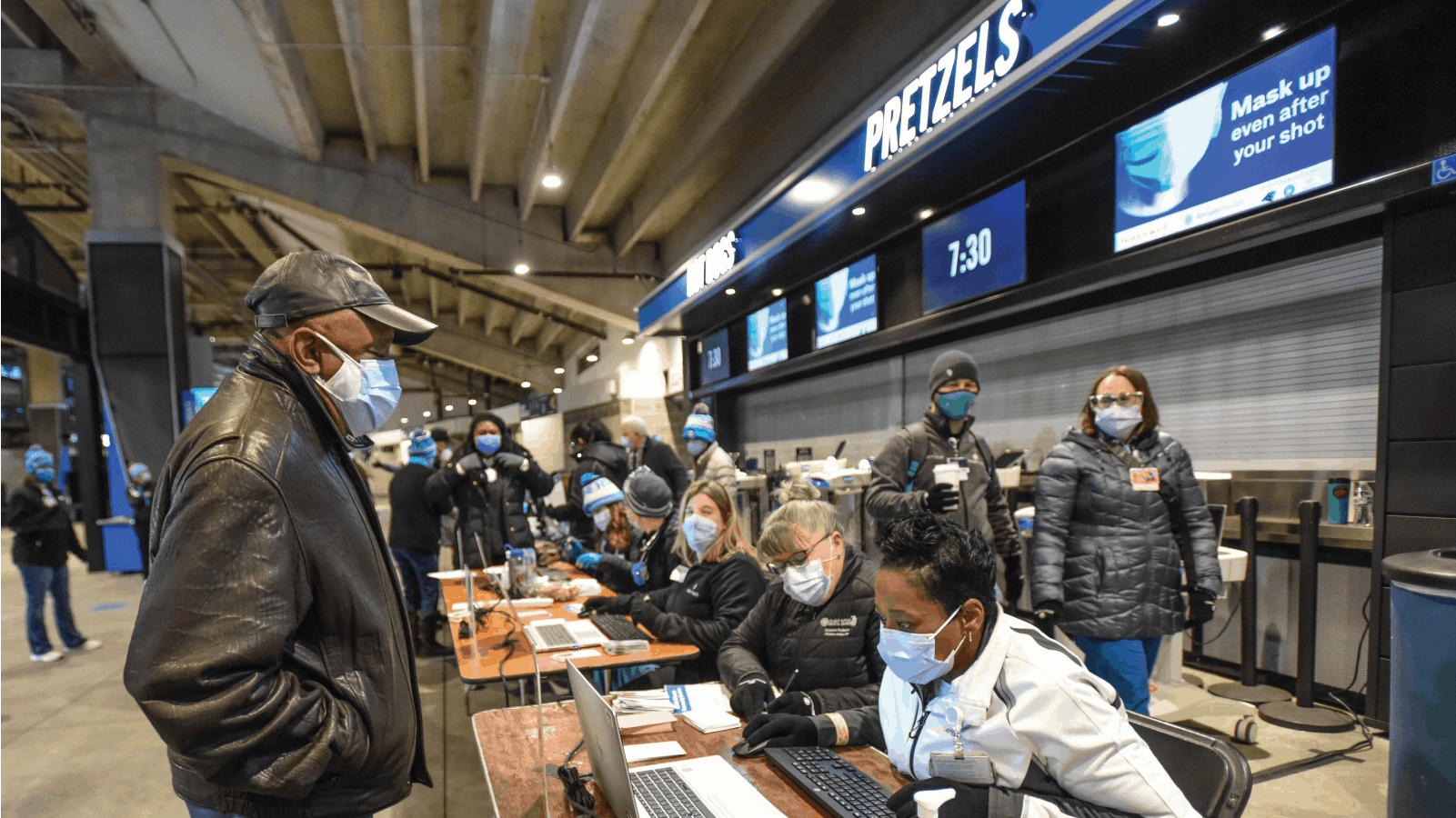So You Want to Run a Vaccination Site

Manufacturers across the country are doing their part for the pandemic response—whether that means developing vaccines, producing vials and containers or creating personal protective equipment for frontline responders. They are also increasing the capacity and efficiency of vaccination operations by embedding their manufacturing methods and technologies—as Honeywell and several partner organizations did recently in North Carolina. Now, the group has published a guide to help others do the same.
What they did: Honeywell, Atrium Health, Tepper Sports & Entertainment and Charlotte Motor Speedway formed a unique public–private initiative with a bold goal of distributing 1 million doses of the vaccine by July 4. With support from the state of North Carolina and Gov. Roy Cooper, the North Carolina Department of Health and Human Services and local governments, these organizations worked together to plan and execute efficient, safe and equitable mass vaccination events at Bank of America Stadium and Charlotte Motor Speedway in January and February.
- “These highly efficient mass events safely vaccinated a diverse group of more than 36,000 people with scalability at a rate of nearly 1,500 vaccinations per hour with average wait times of less than 30 minutes,” according to the guide. “These successes offer several best practices for locations around the world working to get ‘shots in arms’ quickly, efficiently and safely.”
Planning and structure: The guide encourages planners to offer doses by appointment only, to schedule the first and second doses concurrently and to ensure that the venue will have enough doses to serve all its guests without any waste. Meanwhile, it advises that a “task force” staff model be put in place with cross-functional teams and a clear decision-making structure.
Site selection: Planners should consider venues like stadiums, arenas, racetracks and convention centers as mass vaccination sites. But they should also consider whether these venues have:
- Sufficient space for social distancing;
- Free and available parking capacity if necessary; and
- Convenient access to public transportation.
Equity in distribution: Would-be vaccinators should take special account of underserved communities and populations, says the guide. Organizations seeking to create a mass vaccination site should engage in outreach, promote access and work to reduce vaccine hesitancy. That might require:
- Developing early partnerships with diverse faith-based, health care, business, educational, news and entertainment organizations;
- Working with the local government to create free transportation options; and
- Connecting with social influencers and community members who can help reduce vaccine hesitancy in targeted areas.
Process: This how-to guide lays out the processes an organization should be aware of and plan for—from pre-event scheduling to on-site check-in, screening, vaccination and observation. The organization should also plan to do post-event data entry, which ensures both their team and local governments can document doses correctly.
Why it matters: “Like any other successful endeavor, mass and community vaccination events require deep planning, strong leadership, committed partnerships and an army of support,” the guide says. “Missing even one of these critical elements can severely limit the effectiveness of an event, ultimately slowing down a community’s recovery… We hope these learnings will be helpful to government leaders who are building a strategy to get their community vaccinated.”
The last word: As NAM Vice President of Brand Strategy Chrys Kefalas said, “Manufacturers like Honeywell and their partners in health care and government are leading us toward the end of the pandemic. It’s important that all of us play our parts to help them, as the NAM and The Manufacturing Institute’s ‘This Is Our Shot’ project emphasizes. Our industry has been protecting Americans from COVID-19 for a year now, and our job isn’t over yet.”
You can download the full guide here.
